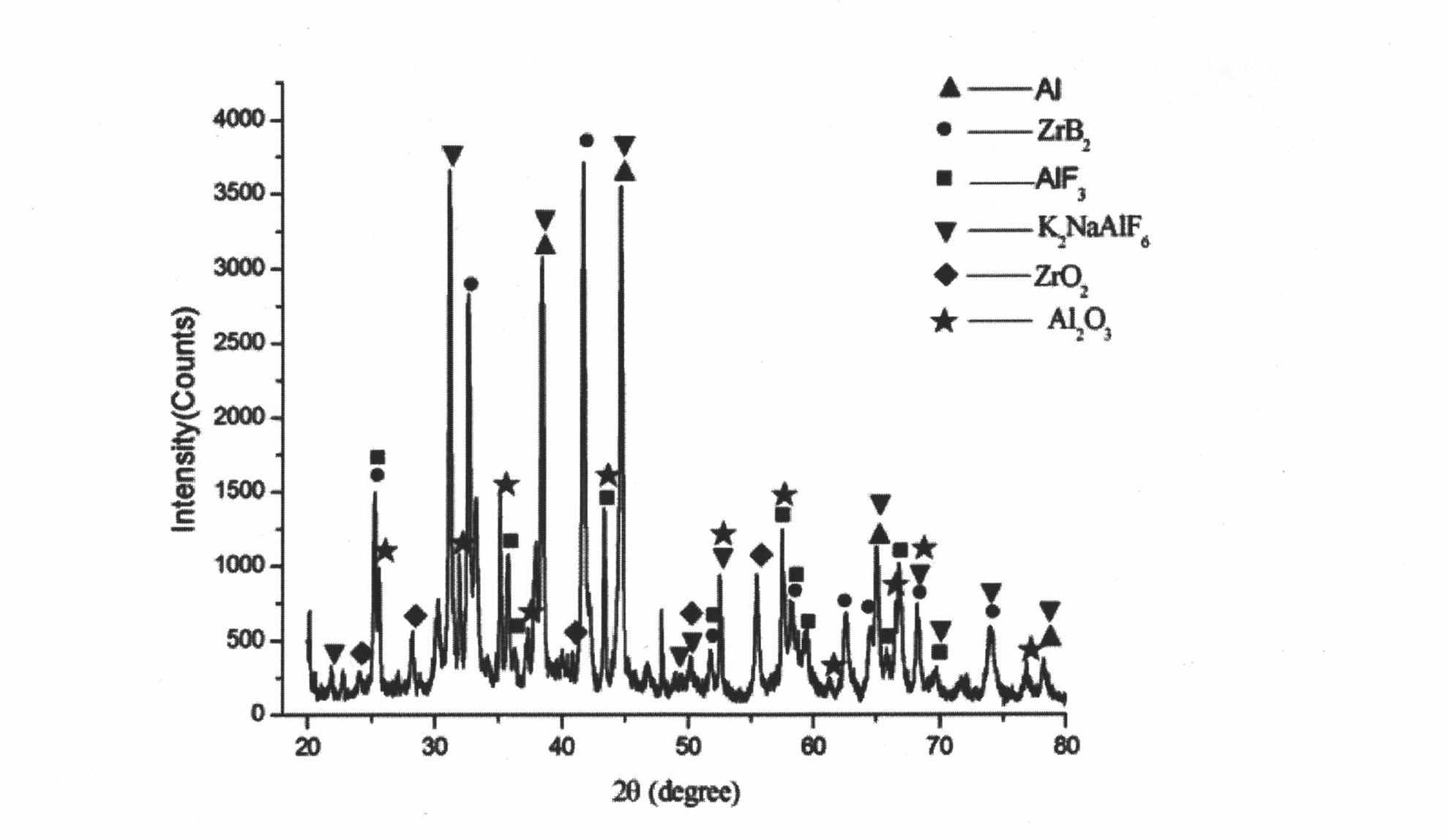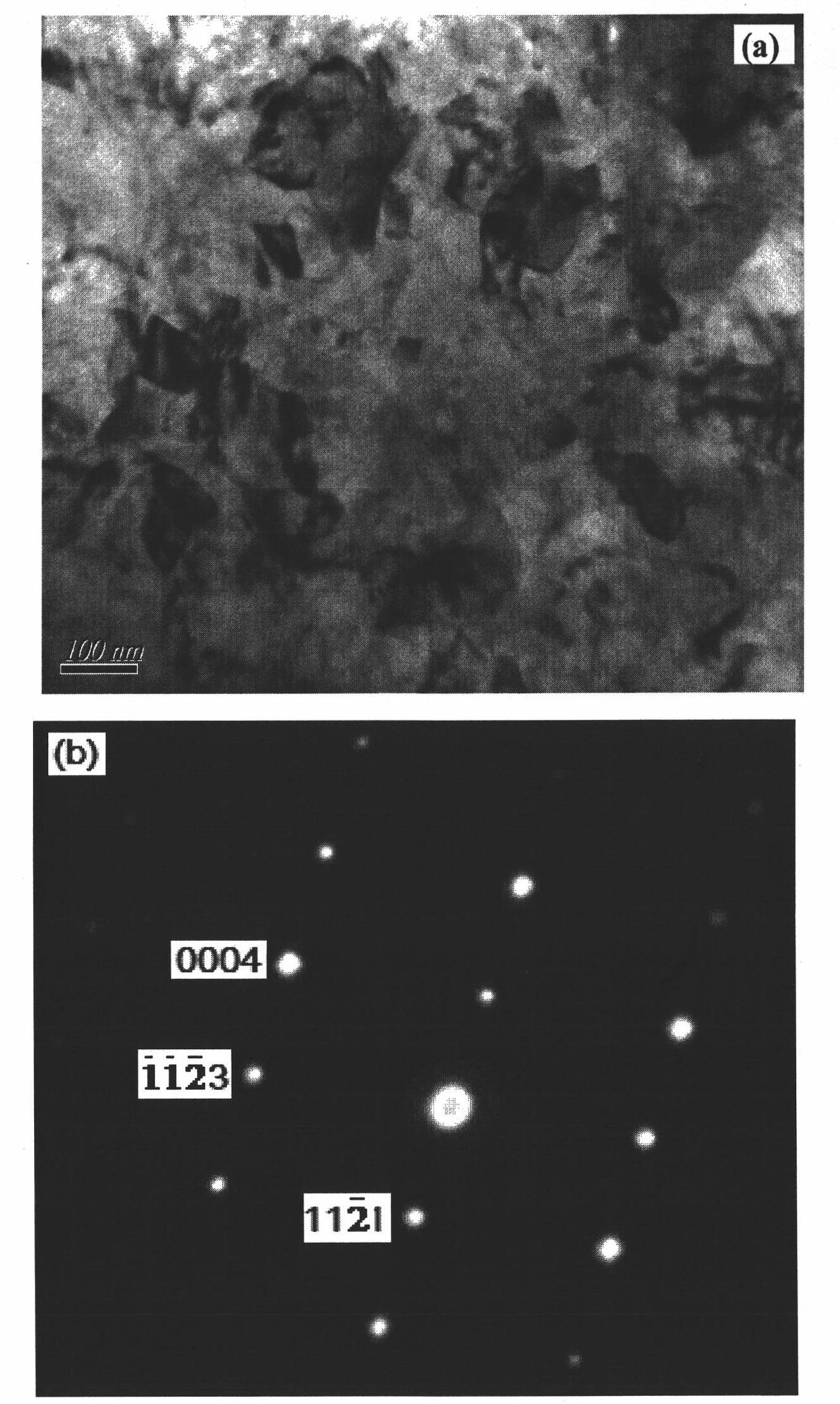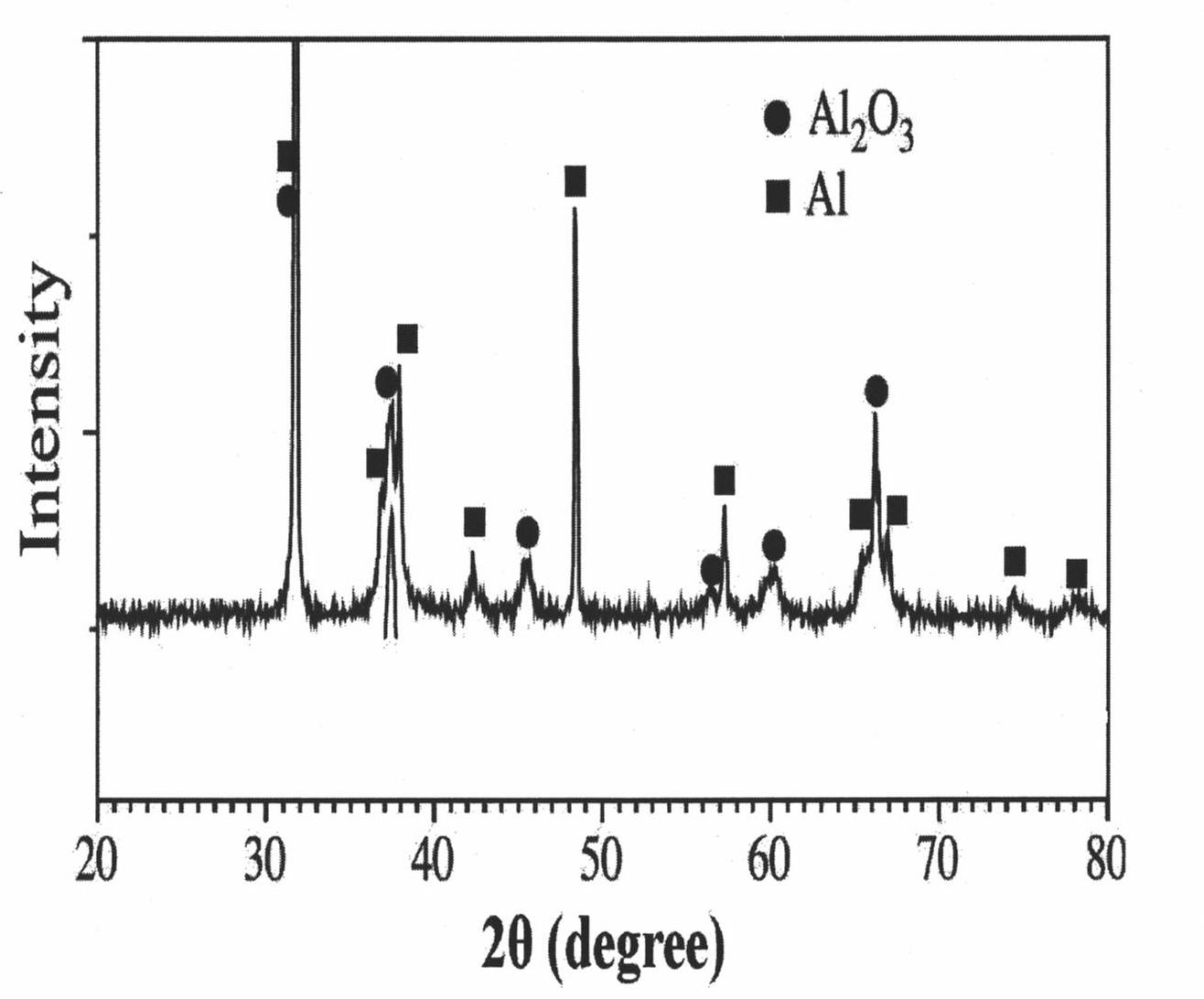Preparation method of Al2O3 nanoparticle reinforced aluminum-based composite material
A composite material and nanoparticle technology, which is applied in the field of particle-reinforced aluminum-based composite material preparation, can solve the problems of uneven particle distribution, high reaction synthesis temperature, and out-of-control particle phase size, and achieve good distribution uniformity and low synthesis temperature. , Improve the effect of material quality
- Summary
- Abstract
- Description
- Claims
- Application Information
AI Technical Summary
Problems solved by technology
Method used
Image
Examples
Embodiment 1
[0036] Raw materials: industrial pure aluminum, purity 99.8% (mass fraction, the same below);
[0037] Solid powder: industrial borax with a purity of 98% (Na 2 B 4 o 7 10H 2 O) powder and potassium fluozirconate (K 2 ZrF 6 )powder;
[0038] The preparation process is as follows:
[0039] (1) First metal smelting and powder preparation:
[0040] 100Kg of pure aluminum is melted in an electric furnace and heated up to 850°C. The reagents borax and potassium fluozirconate were all dried at 200°C, ground into fine powder (particle size less than 100 μm), and weighed for later use. The added weight was 2Kg of borax, 4.9Kg of potassium fluozirconate (borax and fluozircon Potassium acid weight ratio 29:71).
[0041] (2): reaction synthesis:
[0042] After the melt temperature is 850°C, carry out a refinement, press the solid reactant powder into the melt with a bell jar, and then react with strong stirring for 10 minutes, after the melt temperature drops to 730°C, remove t...
Embodiment 2
[0046] Raw materials: industrial pure aluminum, purity 99.8% (mass fraction, the same below);
[0047] Solid powder: industrial borax with a purity of 99.8% (Na 2 B 4 o 7 10H 2 O) powder and potassium fluozirconate (K 2 ZrF 6 )powder;
[0048] The preparation process is as follows:
[0049] (1) First metal smelting and powder preparation:
[0050] 100Kg of pure aluminum is melted in an electric furnace and heated to 830°C. The reagents borax and potassium fluorozirconate used were all dried at 200°C, ground into fine powder (particle size less than 100 μm), and weighed for later use. The added weight was 4.5Kg of borax and 12Kg of potassium fluorozirconate (borax and fluorozirconate Potassium acid weight ratio 27:73).
[0051] (2): reaction synthesis:
[0052] After the melt temperature is 830°C, carry out a refinement, press the solid reactant powder into the melt with a bell jar, and then react with strong stirring for 10 minutes, after the melt temperature drops t...
Embodiment 3
[0056] Raw materials: industrial pure aluminum, purity 99.8% (mass fraction, the same below);
[0057] Solid powder: industrial borax with a purity of 95.1% (Na 2 B 4 o 7 10H 2 O) powder and potassium fluozirconate (K 2 ZrF 6 )powder;
[0058] The preparation process is as follows:
[0059] (1) First metal smelting and powder preparation:
[0060] 100Kg of pure aluminum is melted in an electric furnace and heated up to 800°C. The reagents borax and potassium fluorozirconate used were all dried at 200°C, ground into fine powder (particle size less than 100 μm), and weighed for later use. The added weight was 6.3Kg of borax and 14Kg of potassium fluorozirconate (borax and fluorozirconate Potassium acid weight ratio 31:69).
[0061] (2): reaction synthesis:
[0062] After the melt temperature is 800°C, carry out a refinement, press the solid reactant powder into the melt with a bell jar, and then react with strong stirring for 10 minutes, after the melt temperature drop...
PUM
| Property | Measurement | Unit |
|---|---|---|
| size | aaaaa | aaaaa |
| particle size | aaaaa | aaaaa |
| size | aaaaa | aaaaa |
Abstract
Description
Claims
Application Information
 Login to View More
Login to View More - R&D
- Intellectual Property
- Life Sciences
- Materials
- Tech Scout
- Unparalleled Data Quality
- Higher Quality Content
- 60% Fewer Hallucinations
Browse by: Latest US Patents, China's latest patents, Technical Efficacy Thesaurus, Application Domain, Technology Topic, Popular Technical Reports.
© 2025 PatSnap. All rights reserved.Legal|Privacy policy|Modern Slavery Act Transparency Statement|Sitemap|About US| Contact US: help@patsnap.com



